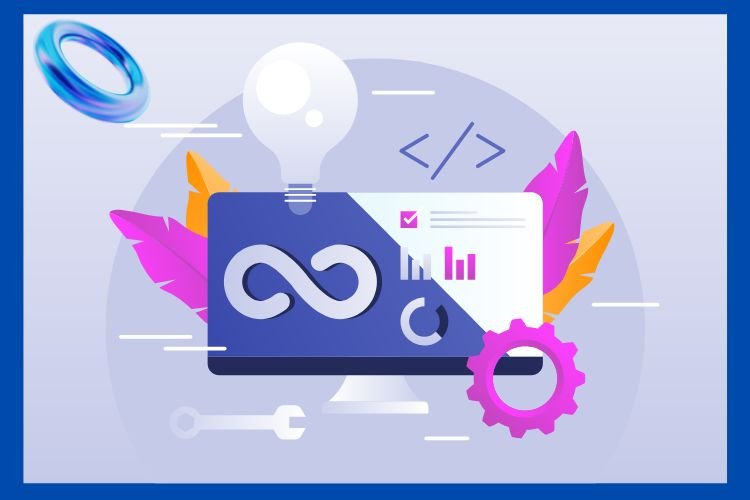
Education has long been decentralized to open itself up to anyone who has the ability to be online. This has redefined the trajectory of our educational and learning pattern from the traditional to becoming flexible and even tailor-made.
However, learning and getting yourself educated online can be difficult and sometimes even seem impossible because it is not easy to find a suitable learning system for you. This is why you need a learning Management System.
What is a Learning Management System?
A Learning Management System, popularly called LMS or Virtual Learning Environment (VLE), is defined as a software application designed for administrating, documenting, tracking, reporting, automation, and delivering educational courses, training programs, materials or learning and development programs.
Learning Management Systems (LMSs) were created to pinpoint gaps in training and education by utilizing data analysis and reporting tools. While they primarily focus on delivering online learning, LMSs are versatile platforms that can host various types of online content, including both self-paced (asynchronous) and real-time (synchronous) courses.
In higher education, LMSs can support traditional classroom settings by managing instructor-led training sessions or facilitating flipped classroom models, where students review lecture material at home and engage in interactive activities in class. Modern LMSs also feature intelligent algorithms that suggest courses to users based on their skill levels.
These systems can analyze metadata from educational materials to enhance the accuracy of their recommendations, ensuring that learners receive tailored and effective guidance for their educational journeys.
The History of Learning Management Systems (LMS)
The learning management system concept evolved directly from the e-Learning approach which was a fast rising innovative learning platform at that time. Learning management systems make up the largest segment of the learning system industry. The origin and rise of the LMS has been dated long back to the late 1990s.
LMSs have become a widely adopted system by almost all higher education institutions in the country where English is spoken worldwide. During the COVID-19 pandemic year (2020s), learning management systems have experienced a massive growth in usage because of the emphasis on remote learning and digitalization.
Learn About CourseInfo
CourseInfo, one of the earliest Learning Management Systems (LMS), was developed in 1995 by a team led by Professor Gary Kaiser at Cornell University. It was designed to manage and deliver online course materials, assignments, and discussions.
Their Interactive Learning Network (ILN 1.5) was characterized as being Web-based, as it was only accessible via the web, making it a groundbreaking innovation at the time. It was also course-centric, focused on organizing course materials, assignments, and discussions in a single platform.
It was simple, intuitive and was designed for ease of use, with a user-friendly interface for instructors and students. CourseInfo, being largely customizable, it allowed instructors to tailor the platform to suit their teaching needs and requirements. The system could handle a large number of courses and users, making it a robust solution for the university.
CourseInfo laid the foundation for modern LMS, influencing the development of subsequent platforms like WebCT, Virtual-U, and eventually, popular LMS options like Blackboard, Moodle, and Canvas. Its innovative spirit and focus on online learning paved the way for the LMS industry’s growth.
10 Importance of a Learning Management System
Learning Management System (LMS) has many benefits and importance and so many individuals and organizations have maximized these benefits. Below are a list of top 10 Importance of LMS both to the individuals, organizations and the instructors:
1. Provides a Centralized Learning Hub
LMS provides a single platform for all your learning resources, making it a one-stop-shop for learners to access and manage their learning resources, including lectures and class, assignments, reading materials, and group discussions.
This centralized system eliminates the need for multiple logins, passwords and apps, making it easier for students to stay organized and focused.
2. Creates a Streamlined Course Management
LMS doesn’t just provide a single centralized learning hub, it also helps instructors in organizing their courses, students, and resources in a more structured way, thereby reducing the administrative burdens, freeing up some more time for teaching and mentoring.
Now instructors can easily manage course content, assignments, and grades, as well as track student progress and communicate with students.
3. Enhanced Collaboration and Communication Tools
LMS also offers various tools that facilitate profitable collaboration and enhanced communication among students, instructors, and the administrators, these include discussion forums, live chats, group assignments, and group review.
The tools here enable learners to work together on projects, share resources, and receive feedback from instructors and peers, thereby achieving unity and togetherness.
4. Rich Digital Resource Library
LMS offers a vast collection of digital resources, these contents includes e-books, articles, videos, as well as multimedia contents, that students and organizations can access anywhere, anytime and with any device.
This digital library provides students with a robust and wealth of learning materials, drastically reducing the need for physical textbooks and accelerating a new learning experience.
5. Efficient Assessment and Grading
Learning Management System assists the instructors to create and manage assignments, assessments, quizzes and tests, and provides automatic grading and records student scores.
This awesome streamlined process saves instructors time and reduces the likelihood of errors, making the assessment process even more efficient and effective.
6. Empowered Personalized Learning Patterns
LMS enables instructors to tailor learning experiences to individual students’ needs and peculiar learning styles, including adaptive learning pathways and personalized feedback system.
This approach enables students and users to learn and interact at their own pace and focus on areas where they need the most improvement.
7. Real-time Progress Tracking
LMS provides both instructors and students with real-time data and analytics on student learning progress, helping them identify areas where students need extra support and provide them with targeted support.
This early identification and identification enables LMS instructors to address these learning loopholes and improve student Learning improvements and overall outcomes.
8. Provides Cost-Effective Learning
LMS drastically reduces costs associated with printing materials, travels, and building or renting of learning centers, making learning more accessible and affordable for students, especially in remote or tight budget areas.
This cost-effective approach of LMS enables institutions to allocate resources more efficiently and improve the overall learning experience.
9. Large and Scalable Solution
LMS is built to handle a large number of users, courses, library and resources, making it an ideal solution for large institutions with multiple campuses, faculties, and programs.
This potential scalability enables institutions to not just expand their online learning offerings but also reach a wider audience.
10. Data-Driven Insights and ideas
LMS provides instructors and administrators with valuable insights, ideas, advice and analytics on their student’s engagement, progress, improvement and performance, helping them refine their teaching methods, improve student learning outcomes, and make better upward data-driven decisions.
These insights enable institutions to identify areas of improvement and optimize their online learning strategies.
In Conclusion,
Learning Management System is essential for everyone who desires to learn and improve their knowledge base, relevance and productivity in life and in the workspace.






